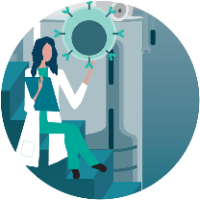Technical and regulatory opportunities and challenges for cell and gene therapies in low earth orbit: a status report
Cell & Gene Therapy Insights 2025; 11(4), 545–577
DOI: 10.18609/cgti.2025.067
The unique advantages exhibited by microgravity in enhancing the biological and chemical interactions for cells and tissues have come into greater focus following a quarter century of biological investigation aboard the International Space Station (ISS) in low earth orbit (LEO). One of its primary biomedical research purposes has been to investigate and mitigate the health risks faced by astronauts during prolonged spaceflight. However, as this status report describes, the hundreds of experiments aboard the ISS have also produced a vast quantity of knowledge opening up new possibilities for improving therapeutic modalities for the unmet medical needs of patients on earth. Among its many functions and capabilities, the ISS has been a preeminent biomedical research laboratory for biotechnology and drug development. Public–private partnerships have created the necessary collaborations and supplied the resources to conduct sophisticated biomedical experiments which have led to the improvement in the applications of stem cell biology, gene therapies, tissue engineering, and regenerative medicine. Technological advancements have also resulted in 3D bio printing of soft tissues such as blood vessels and micro physiological systems (Tissue on a Chip) using cells organized in a predetermined architecture. Nanomaterials assembled in microgravity formed with increased homogeneity and bioactivity can function as delivery platforms for cancer therapeutics or may be shaped into extracellular matrix supporting tissue regeneration therapies. Given these exciting innovations, and with the expectation that a robust regulatory framework will emerge, sustainable biomanufacturing in LEO is poised to unlock a transformative economic potential and accelerate the development of advanced next-generation therapeutics.
